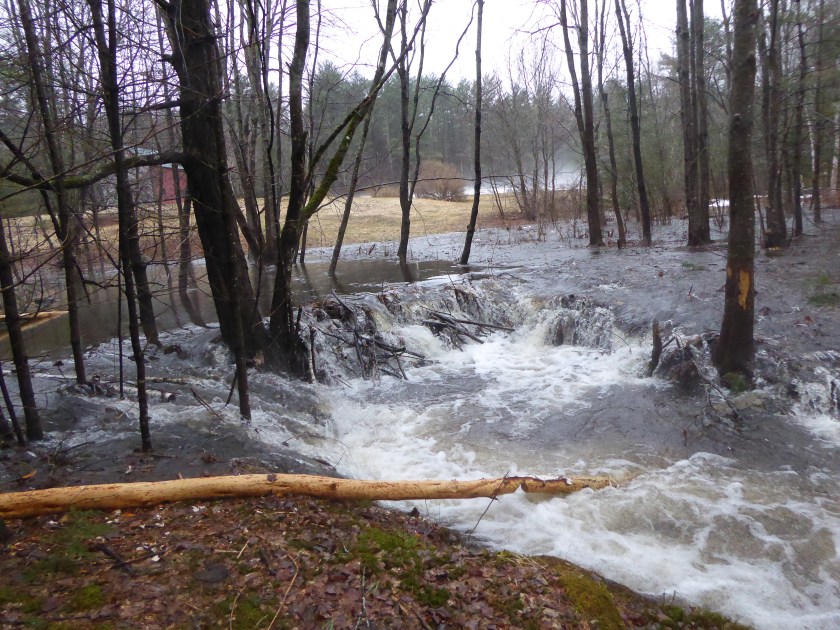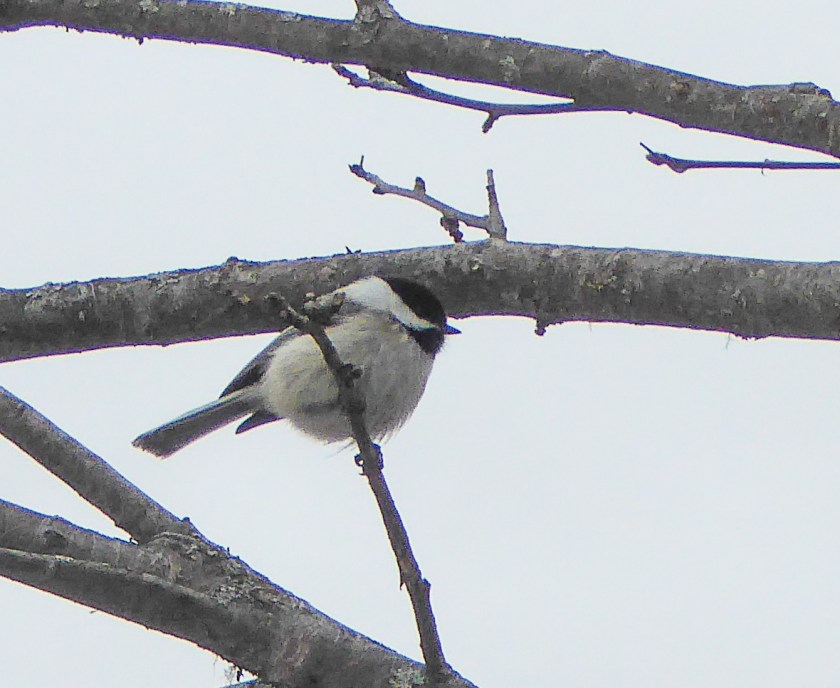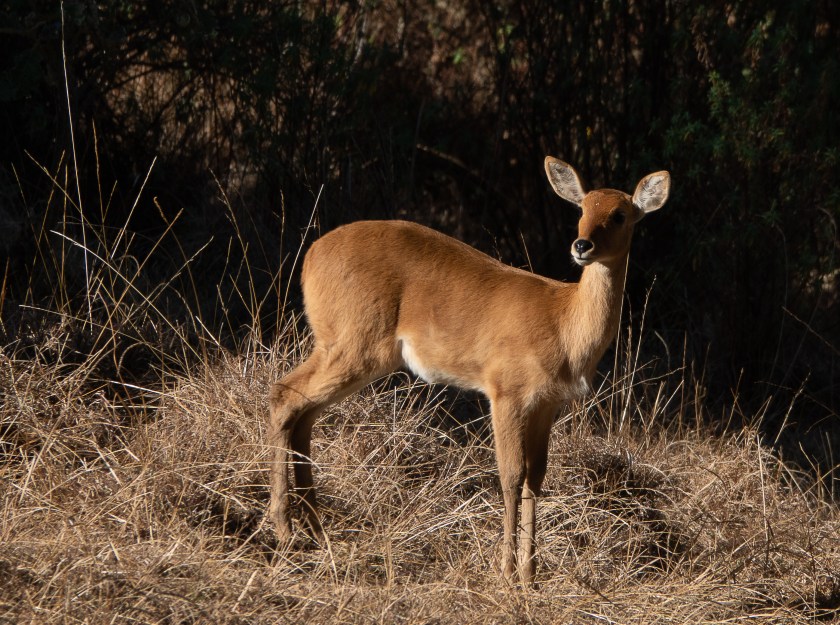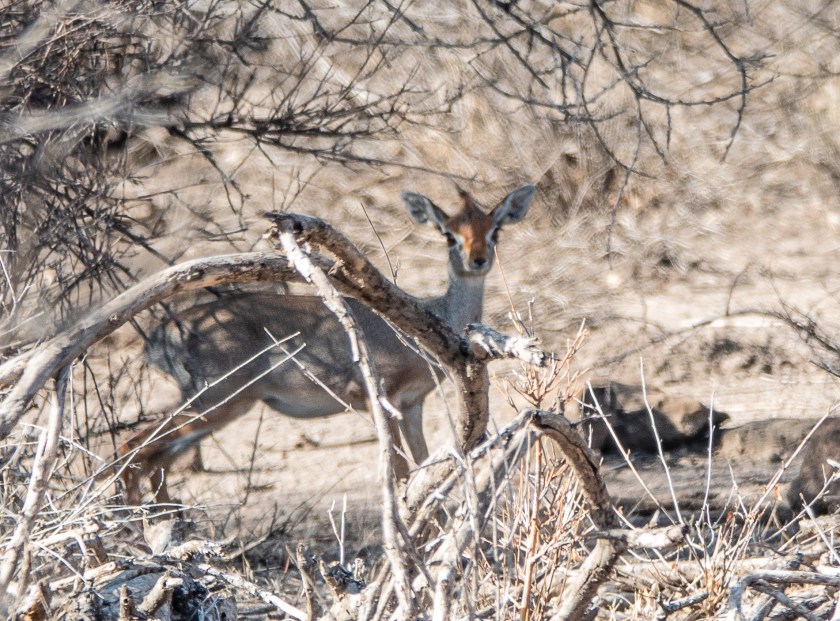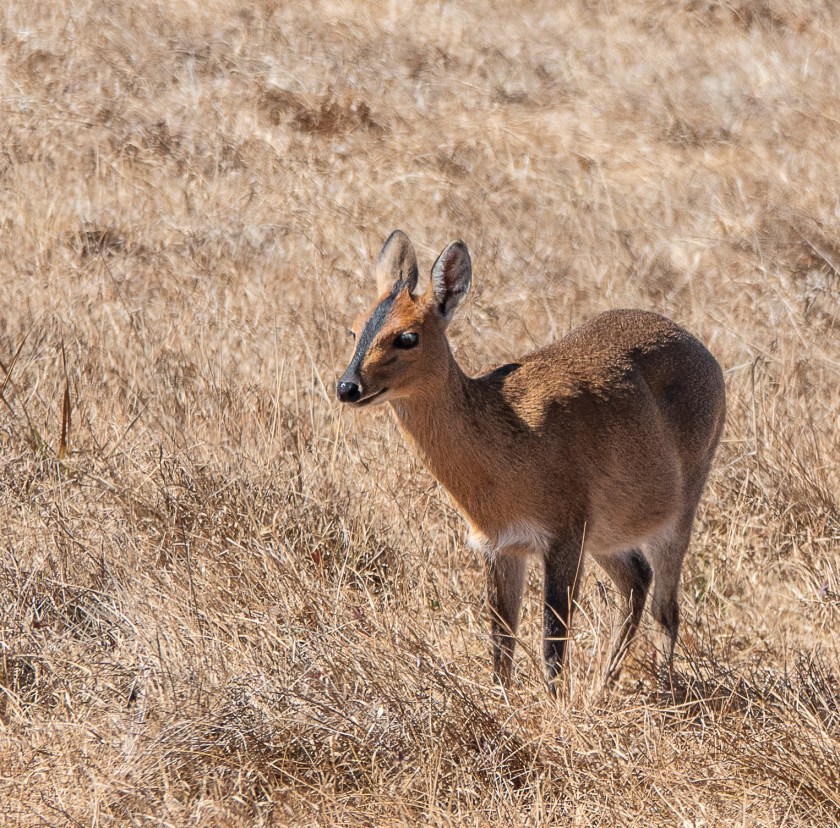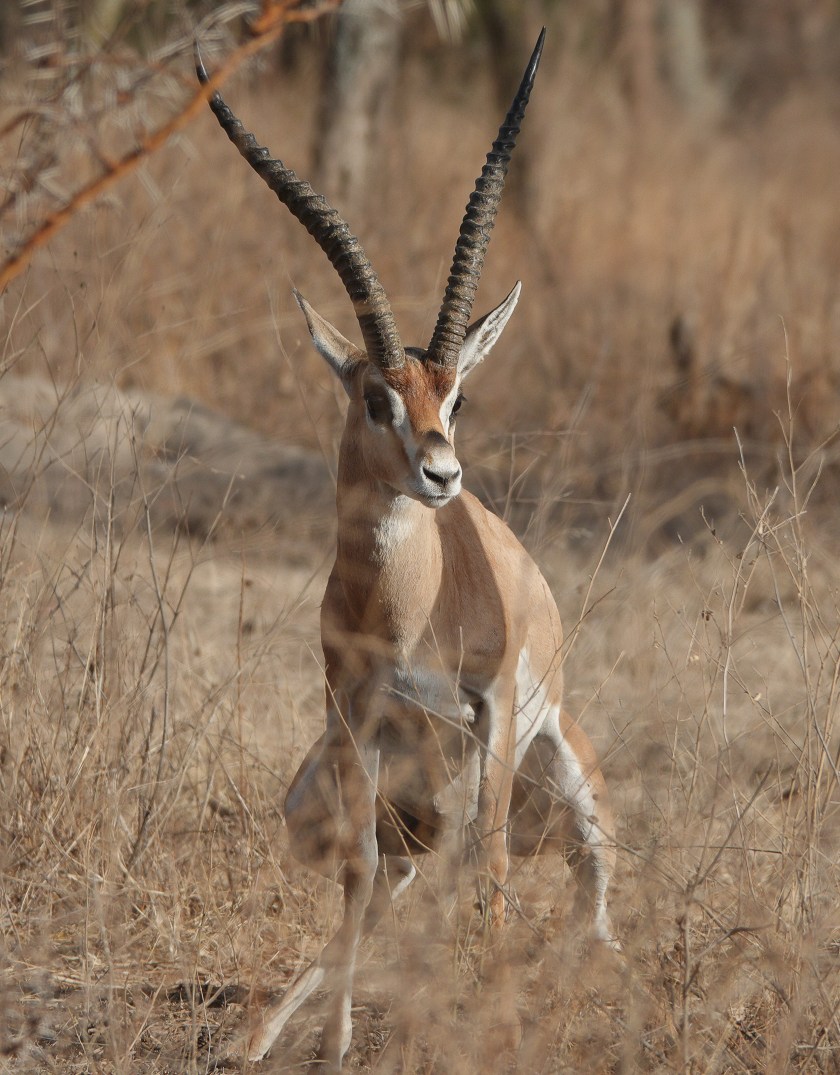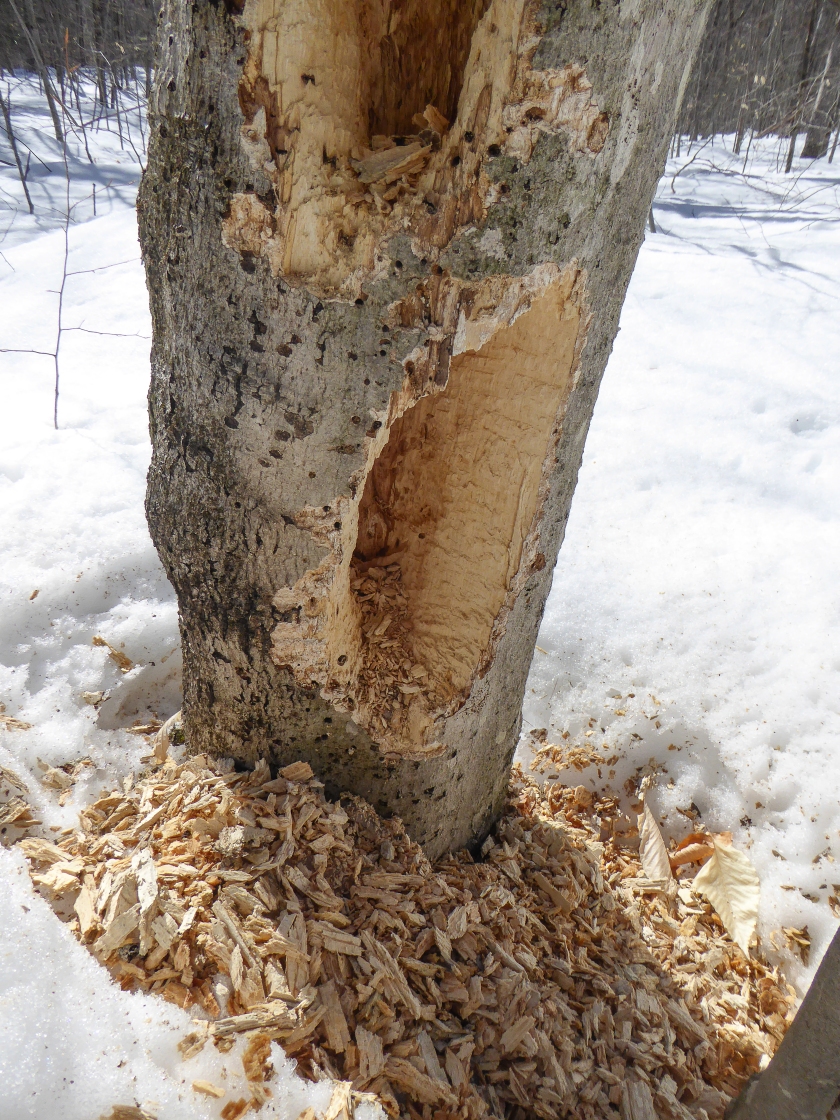After a break from antelope, back to Ethiopia and a couple more, larger than the last batch …..
This elegant beast is a female Lesser Kudu, Tragelaphus imberbis. She will hide in thick brush most of the day and feed mainly at night. Males can be 41″ at the shoulder and weigh 108Kg, with spectacular spiral horns.
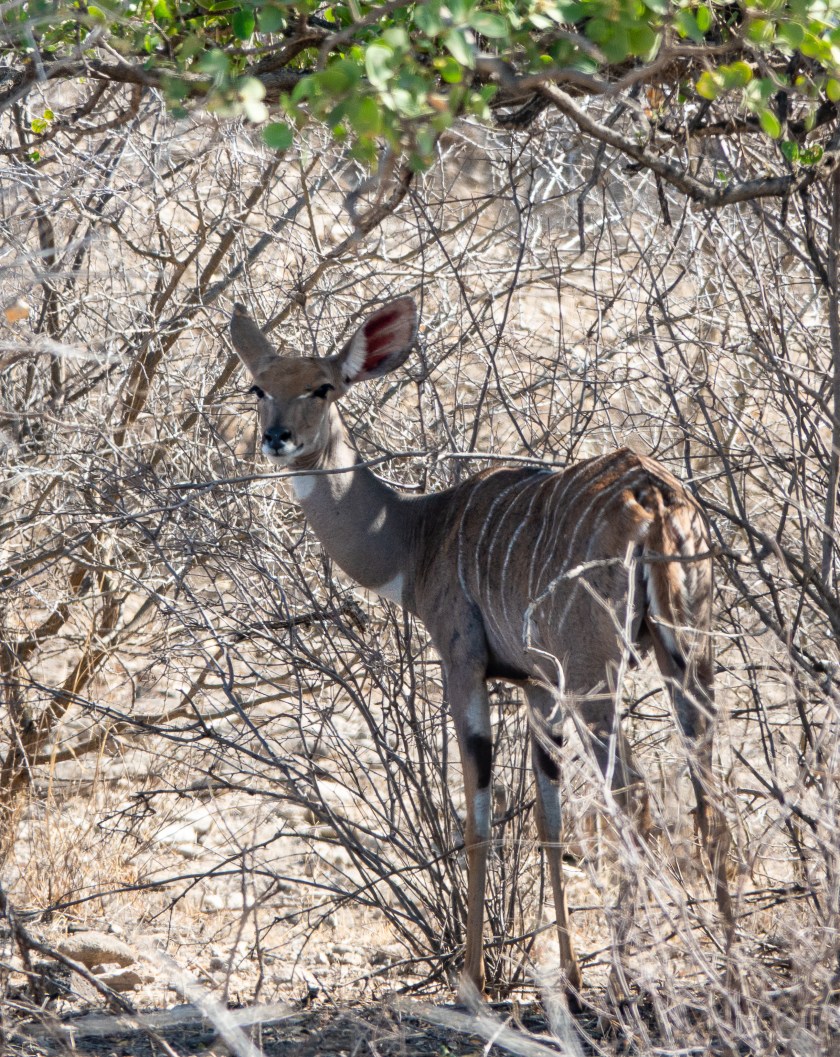
For comparison, these are male Greater Kudu, Tragelaphus strepsiceros, in Zambia last spring. These males are much larger, 63″ at the shoulder and at 270Kg weighing more than twice as much as their Lesser brethren.

There are only around 700 mature Swayne’s Hartebeest, Alcelaphus buselaphus swaynei, left in the world, and one of the remaining populations is in Senkele sanctuary, not far from Lake Awassa. The sanctuary is reached via a dirt road through a tiny village, and the village kids climbed precariously on the back of the bus for a fun but dangerous ride. Our worried guide tied thorny acacia branches to the back, which successfully dislodged them.
The rangers had burnt the dry grass to encourage new growth, and the herd had headed straight there for the tiny invisible green shoots.

This mother spent maybe ten minutes cleaning her baby’s bottom. A mother’s love knows no bounds, but I prefer baby wipes.
PS Hartebeest were given their name because they look rather deer-like, ‘hart’ being an archaic word for deer, and the obsolete Afrikaans hertebeest means ‘deer-beast’. Males can weigh up to 200Kg, much larger than the Lesser Kudu.
PPS My title comes, yet again, from the Flanders and Swann song about the Gnu, since poems about hartebeest are hard to come by…
“G-nor am I in the least
Like that dreadful hartebeest”
PPPS You will be relieved to know that after today there is only one last antelope post still to come!


